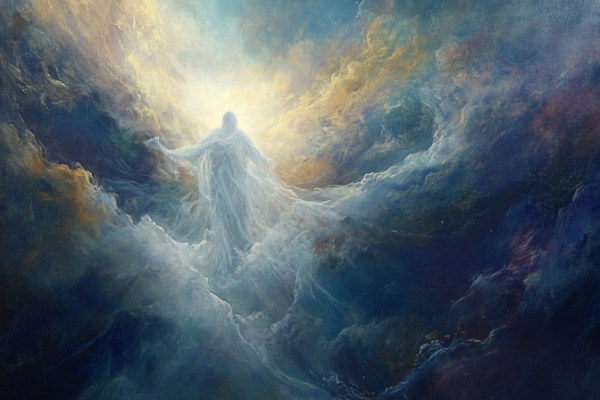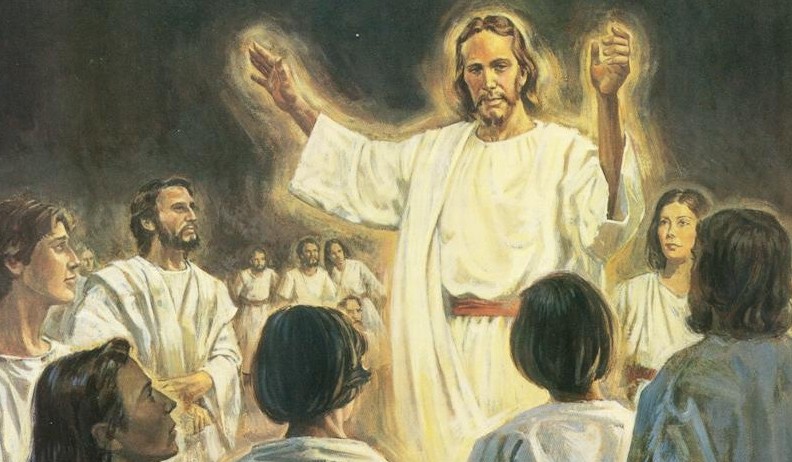Question
Gramps,
I have learned that all spirits after they die remain on earth. However, I couldn’t find scripture or talks to back this up. And then I disagree with someone who seems to think that not everyone remains on earth after they die. They thought it would be difficult for missionary work to go on if they were all still not here on earth. But I can’t find anything to back up my claims.
Daniel
Answer
Daniel,
According to the theology of The Church of Jesus Christ of Latter-day Saints, upon death, the spirit immediately transitions to the spirit world—a realm that exists concurrently with our mortal world but is not visible to the living. This belief is rooted in the Book of Mormon, specifically in Alma 40:11-13, which states that all spirits are taken home to God after death. The righteous are welcomed into a state of happiness known as paradise, while the wicked face a different fate.
Joseph Smith, the Church’s founding prophet, affirmed this notion by teaching that the spirit world is not a distant place but rather a transformation into a different state of existence. He explained that “the spirits of the just are exalted to a greater and more glorious work; hence they are blessed in their departure to the world of spirits” (Teachings of the Prophet Joseph Smith, p. 325). This immediate transition reinforces the belief that spirits do not linger on earth but rather embark on a new journey.
The spirit world is divided into two main areas: paradise for the righteous and spirit prison for the wicked. The Book of Mormon teaches that the righteous spirits are in a state of joy, free from pain and suffering, and can converse with one another. In contrast, wicked spirits find themselves in a state of torment, separated from the presence of God. Alma 40:12-13 illustrates this separation, emphasizing that the righteous and wicked are not only in different states but also in different realms of existence.
Brigham Young, a prominent leader in the Church, elaborated on this concept by stating, “When you lay down this tabernacle, where are you going? Into the spirit world. Where is the spirit world? It is right here” (Journal of Discourses, 3:367). This understanding reinforces the idea that spirits are not bound to earth but are in a different state of being, aware of their surroundings and the lives of their loved ones.
While the spirits of the deceased do not remain on earth, it is believed that they can visit their loved ones under certain conditions. Joseph Smith taught that the spirits of the just are not far from us and can comprehend our thoughts and feelings, often feeling pain for those they leave behind (Joseph Smith, Discourses of the Prophet Joseph Smith, p. 128). This belief suggests that although spirits do not linger on earth indefinitely, they may have the opportunity to offer comfort and guidance to their living family members.
Many Latter-day Saints share personal experiences of feeling the presence of deceased relatives during significant moments in their lives. These accounts often involve feelings of peace, love, or guidance that are attributed to the visitations from loved ones who have passed on. Such experiences are seen as evidence of the continued connection between the living and the deceased, reinforcing the belief in an eternal family structure.
In Latter-day Saint theology, children who die before reaching the age of accountability—typically considered to be eight years old—are believed to go directly into the presence of God, bypassing the spirit world altogether. This doctrine highlights the compassionate nature of God, who allows these innocent spirits to return to Him without experiencing the trials of the spirit world (Doctrine and Covenants 137:10).
This belief points to the importance of the family unit in Latter-day Saint doctrine and reassures grieving parents that their children are in a safe and loving environment after death. The teachings emphasize that these children are considered innocent and are thus granted immediate access to the celestial kingdom, reflecting God’s mercy and love.
Another significant aspect of Latter-day Saint belief is the awareness that spirits possess regarding the lives of the living. It is taught that spirits in the spirit world can perceive earthly events and are often concerned about their loved ones. Joseph F. Smith, in a vision, expressed that the dead are not perfect without us and that their concern for the living is profound. This idea resonates with many who have felt a connection to deceased loved ones, believing that their influence and love continue even after death (Journal of Discourses 19:264).
Moreover, the teachings of the Church clarify that spirits are aware of their family’s struggles and successes, which can provide comfort to those mourning the loss of a loved one. It is believed that this ongoing connection allows for a deep sense of unity, even in the face of death.
While there are various beliefs about earthbound spirits in popular culture, Latter-day Saint doctrine does not support the idea that spirits remain attached to the living or are bound to earth in any way. Such beliefs are often considered false doctrines within the Church. Instead, the teachings emphasize that spirits transition to the spirit world and are not confined to the earthly realm.
Additionally, the Church encourages members to seek understanding through the scriptures and the teachings of prophets rather than turning to secular sources or popular myths. By doing so, members can strengthen their testimonies of the eternal nature of the soul and the divine plan for life after death.
Gramps







